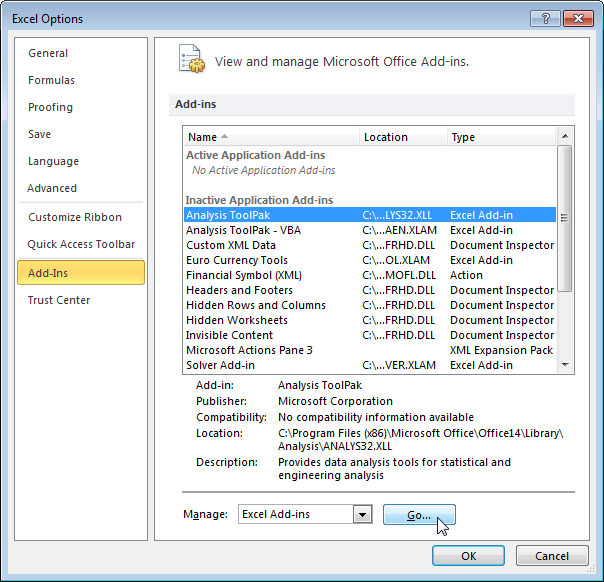
However, you can't publish or import the workbook back into Power BI. You can Save the Excel workbook you create with the Power BI dataset, just like any other workbook.
#Data analysis excel mac 2015 how to#
Instead, a policy tip appears with a recommendation to upgrade the label.įor more information, see how to apply sensitivity labels in Power BI. If you manually set sensitivity labels in Excel, they aren’t automatically overwritten by the dataset's sensitivity label. If the dataset changes to become less restrictive, no label inheritance or update occurs. If the sensitivity label on the dataset later changes to be more restrictive, when you refresh the data in Excel, the label applied to the Excel file updates automatically. When using Analyze in Excel, any sensitivity label that's applied to a Power BI dataset is automatically applied to the Excel file. You may also have to Enable Content, depending on your Trusted document settings. The first time you open the file, you may have to Enable Editing, depending on your Protected view. So if the report was called Sales Analysis, then the downloaded file would be Sales Analysis.xlsx. The workbook file name matches the dataset (or report, or other data source) from which it was derived. The Power BI service generates an Excel workbook that contains an OLAP connection to the Power BI dataset, and downloads this workbook to your computer.

If it doesn't install automatically, see Install Analyze in Excel in the article "Troubleshoot Analyze in Excel." Remember that if you select Analyze in Excel for a report, it is the report's underlying dataset that is brought into Excel.įor any of these options, the Analyze in Excel feature should install automatically.


 0 kommentar(er)
0 kommentar(er)
